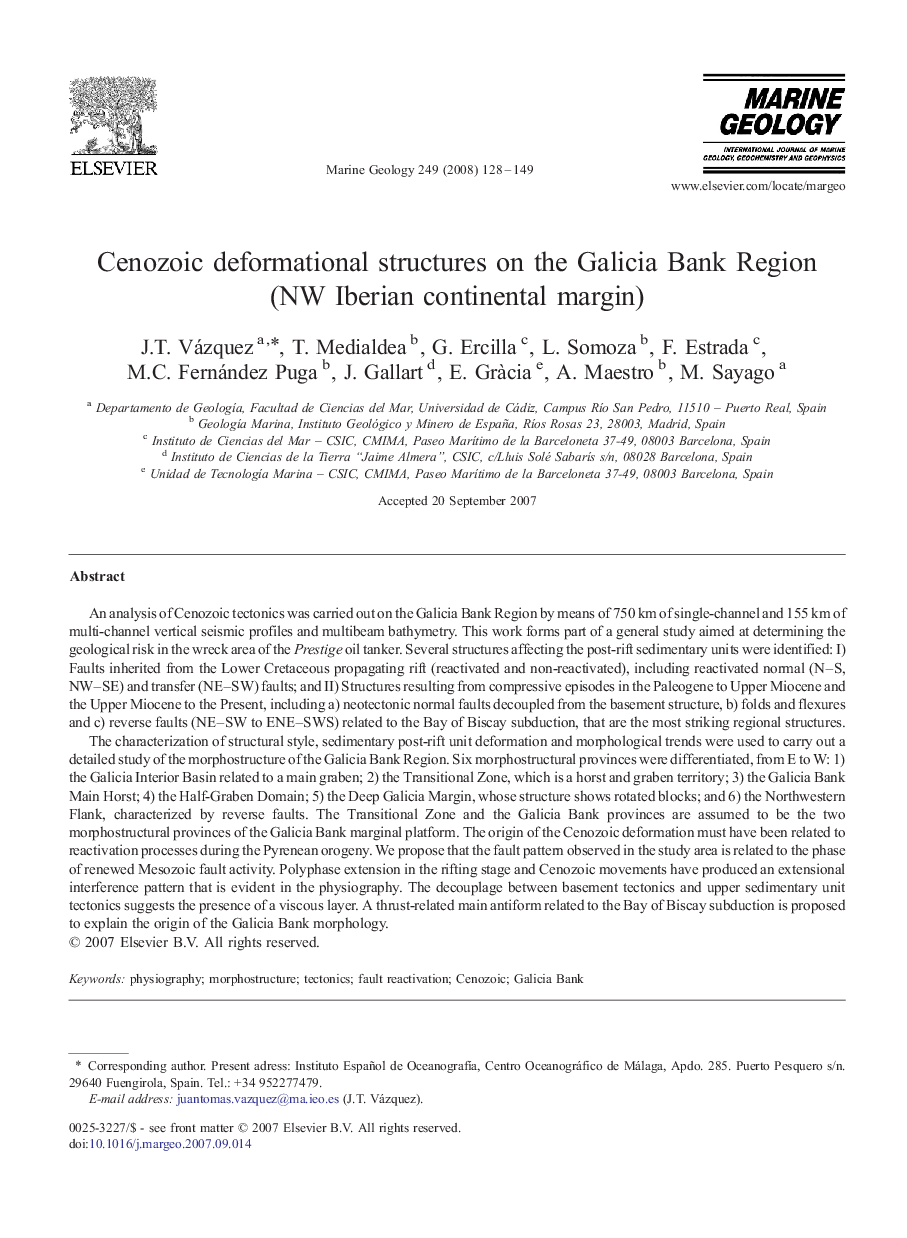| Article ID | Journal | Published Year | Pages | File Type |
|---|---|---|---|---|
| 4719329 | Marine Geology | 2008 | 22 Pages |
Abstract
The characterization of structural style, sedimentary post-rift unit deformation and morphological trends were used to carry out a detailed study of the morphostructure of the Galicia Bank Region. Six morphostructural provinces were differentiated, from E to W: 1) the Galicia Interior Basin related to a main graben; 2) the Transitional Zone, which is a horst and graben territory; 3) the Galicia Bank Main Horst; 4) the Half-Graben Domain; 5) the Deep Galicia Margin, whose structure shows rotated blocks; and 6) the Northwestern Flank, characterized by reverse faults. The Transitional Zone and the Galicia Bank provinces are assumed to be the two morphostructural provinces of the Galicia Bank marginal platform. The origin of the Cenozoic deformation must have been related to reactivation processes during the Pyrenean orogeny. We propose that the fault pattern observed in the study area is related to the phase of renewed Mesozoic fault activity. Polyphase extension in the rifting stage and Cenozoic movements have produced an extensional interference pattern that is evident in the physiography. The decouplage between basement tectonics and upper sedimentary unit tectonics suggests the presence of a viscous layer. A thrust-related main antiform related to the Bay of Biscay subduction is proposed to explain the origin of the Galicia Bank morphology.
Related Topics
Physical Sciences and Engineering
Earth and Planetary Sciences
Geochemistry and Petrology
Authors
J.T. Vázquez, T. Medialdea, G. Ercilla, L. Somoza, F. Estrada, M.C. Fernández Puga, J. Gallart, E. Grà cia, A. Maestro, M. Sayago,
